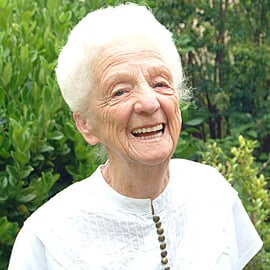In 1936, Wesley Mission commenced construction on Australia's first village in Brisbane - 10 years before development in any other state. Those buildings, at Chermside, are still in use today.
Queensland Loves Village Communities of All Kinds
400 villages now operate around the state, compared with 1,750 across Australia.
In 1936, Wesley Mission commenced construction on Australia's first village in Brisbane - 10 years before development in any other state. Those buildings, at Chermside, are still in use today.
The main reasons Queensland has historically had so many villages are: the availability of land; the strong community spirit and relaxed character of Queenslanders; the appeal of regional towns on the coast beyond Brisbane; and the willingness of Southerners to move to the Sunshine State to retire.
Apartments the New Trend
For 50 years, apartment living has been the answer for people in Europe - it is now catching on in Australia, and not just for young people. Apartment living is, in fact, proving to be the perfect solution for older folk, and again Queensland is leading the trend.
AVEO, Living Choice and Wesley Mission are all creating dynamic and contemporary apartment villages in high demand locations. The appeal lies in the lower cost to live in the heart of an inner-city location with proximity to shops, hospitals and entertainment. Apartment villages have no steps or gardens to water, and you can close your door and travel without stress.
Resort-style Village Communities
Some villages - emphasising the lifestyle experience - are built like resorts. These villages offer facilities such as tennis courts; bowling and putting greens; wellness centres with pools, spas and gyms; restaurants and hairdressers. Resort-style villages can be $50 - $100 million private sector developments, with weekly service fees at around $100 or more.
Retirees are Demanding More
Today's retirees want bright living areas and quality kitchens. Most village operators upgrade their homes before a new resident moves in. Not-for-profit groups may upgrade kitchens every 15 years at a cost of $8 - $10,000 each time, while private operators do so every eight to 10 years. This costs them $500 - $1000 per resident per year.
Ageing Boomers and Future Demand
Baby boomers will hit age 65 in 2011. Can demand keep up with supply? At the current take-up rate, 30,500 new village homes will have to be constructed by 2021 to satisfy demand. That is 2,000 new village homes or 20 new villages costing $1 billion every 12 months. The quandary the industry faces relates to land. If you are contemplating a village move, do not put it off until an emergency occurs - you may be disappointed with no vacancies where you want them.
Thank Marchant's Soft Drink for Today's Villages
The first village movement in Australia was pioneered in Brisbane during the aftermath of the Depression. Reverend Harold Wheller of the Central Methodist Mission had become an expert in finding accommodation for homeless men and women - he even resorted to using the City Morgue as a shelter.
He dreamt up the model for today's village: "Do we live in a world where we can make dreams come true? This is our dream and it concerns old folk... A lovely home, a block of buildings for administrative purposes and grouped around it comfortable little cottages and gardens for older married couples." In 1936, he approached the wealthy owner of Marchant's Soft Drink - Mr. Marchant himself - with the "interesting and possibly dangerous experiment in the realm of social service to aged people." Mr. Marchant agreed to provide £22,000 and personally helped select the first site - now known as Wheller Gardens at Chermside - operated by Wesley Mission.
The rest of Australia did not catch on until 1945, when Mrs. Jessie Vasey founded the War Widow's Guild in Victoria so as to fight for better conditions. The Guild held a Monster Raffle to acquire a few old houses to convert into bed-sit-style accommodation. Around 1954, Prime Minister Menzies inspected a similar program in Adelaide and was sufficiently moved to introduce the Aged Persons' Homes Act (APHA) which subsidised this form of housing, pound for pound.
Other not-for-profit organisations such as the RSL, Lions, Southern Cross Homes, Masonic Homes, Brotherhood of St Laurence and Country Women's Association started to provide independent housing for older people from thereon in. In 1974 the Whitlam Government decide to phase out the scheme, but even so the movement has been truly established. Since 1936, 30,000 dwellings had been built and Reverend Wheller's dream - and prayers, no doubt - had been realised many times over.






